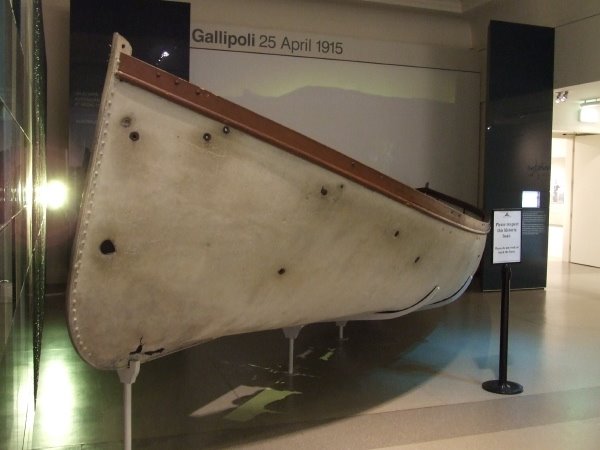Good news all around, IMHO.
To pick up on some of the very reasonable points:
jmkendall wrote:
However I just want to point out that she was rescued from the swamp to save her. If you want to preserve her for the LONG term then you will need to do a considerable amount of corrosion control. So much so that you might as well rebuild her to a Museum Quality static display.
The choice isn't to
either only rebuild or decay, but to use well-established
conservation techniques to retain what original material can be saved (which in this case is
most of what's there).
It's a different technique for a different result, and neither is 'right' or 'wrong'. However the concept of conservation is a standard, basic, museum and heritage approach, and I'm continually surprised at how often it seems a surprise to some on WIX. We're all familiar with it when we hit a heritage building, art gallery or even sporting relics.
In the case of the Swamp Ghost, conservation is (in
museum mandate terms) the right way to go; it requires less intervention, cost and work that anything else (it'll be much cheaper and less demanding technically than restoration. The other alternative is 'later intervention'. Whoops) and any other approach would cause a justifiable castigation of the museum.
Quote:
I can't speak for anyone but myself. But in a California Museum is a Huey that I crewed south of the border in the early 80s. The question i ask myself is; "would I rather take my children to see that complete and restored ( even in its Vietnam markings!) or would I rather take them to see a wrecked Huey that was pulled from the forest and dumped on the floor of a Museum in a Diorama?
'Dumping' an aircraft on the museum floor whether direct from
either the flight line or the wreck site is the problem. In both cases, the aircraft (or artefact) must be
prepared and
conserved for display. If the museum thinks restoration or reconstruction is needed, that's an additional step, not an alternative.
Secondly there are a number of aircraft wrecks in museums - to take a few, the Betty at Planes of Fame and the Halifax, Hurricane and Gladiator wrecks at the RAF Museum Hendon, or the Great Lakes recoveries in dioramas at NMUSNA Pensacola. In all cases they cause
some aviation buffs to throb at the temples; however personally I find they provide a moment's thought about the human cost of war and the fragility of us and our much vaunted technology. That 'pause for thought' which
isn't brought out by the 'as new' shiny approach is one of the things many people want and today most museums recognise as part of their required offering.
In fact the 'shiny new' is often a problem. I've been asked, sceptically, if the fully restored aircraft is
really the one that saw that action in the battle (in this case, also Vietnam). The answer comes by pointing at the period bullet hole patch is perhaps the most important item on the aircraft for that audience and if replaced with a new metal panel, wouldn't have any resonance.
Quote:
That's a no brainer. My kids appreciated the painted and restored planes but looked at me kinda crazy when I wanted to go look at the "unrestored" aircraft in the storage area.
Without it being some kind of judgement (it's not, it's an observation). I think that says a lot about the values your kids have got from their modern, built-in obsolescence and disposable hardware culture - (and in a different, perhaps more positive way, your interest and understanding.) This isn't meant to be a nationalistic remark, but from personal observation, the need for 'new' looking history is a particularly (modern) American thing. Certainly in Europe the concept of 'patina', and that old stuff is (by the nature of its very survival) bearing witness marks means that the story of the artefact is often in the damage it has. Whether that's a fair comment on American mores or not, most Americans have no problem with the aging marks on stuff; and I don't think anyone would suggest the Liberty Bell should be repaired. Do your kids not appreciate the bell because it's cracked? I'm sure not. So it's just a question of transferring one aesthetic appreciation to another environment.
Quote:
BTW my Grandfather was at Pearl during the attack. He was in charge of the Boat House on Ford Island and had two boats sunk from under him during the the attack. If they found one of the boats on the bottom of the Harbor and displayed it 'as found" I'm not sure that I would consider that a respectful display.
Interesting point:

I'm sure we agree the Australian War Memorial shouldn't remove the bullet holes in this boat from Gallipoli? (Notably, partly due to the over-emphasis on that stupid debacle in Australian culture, and partly because of the boat's damage, it's in the first area you come into.)
Perhaps a certain 'boat' at Pearl today should be raised and rebuilt; after all it's leaking and decaying right now. But most would agree the USS
Arizona memorial is absolutely the right approach.
Good thing to discuss! FWIW, I like seeing a flying B-17; but for me the Ghost must be desplayed as a recovered wreck, ideally in a diorama, which will tell us something of the cost of war, not fake-up the 'durability' of technology.
(And in response to another point, I have zero interest in Hawaii, but the Ghost would be a reason to stop there for me, now.)
Just some museum theory and views...
Regards,





